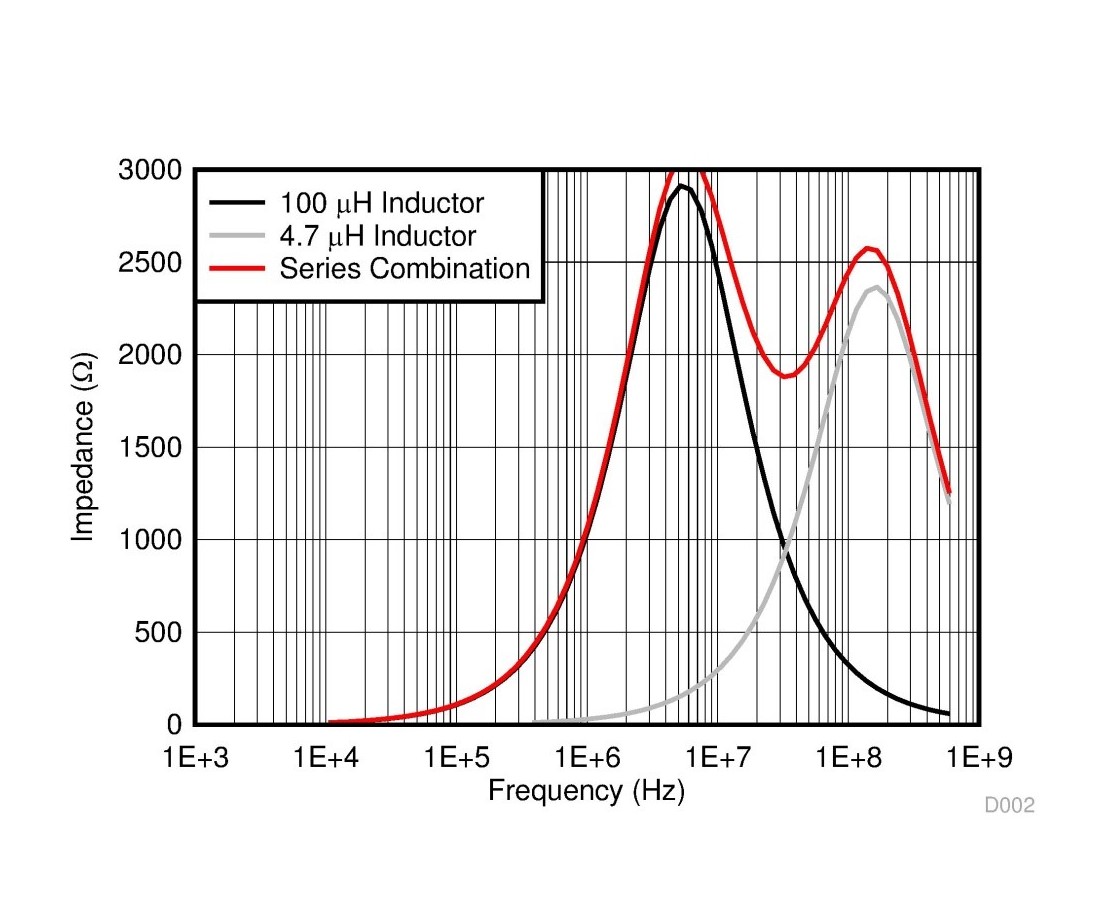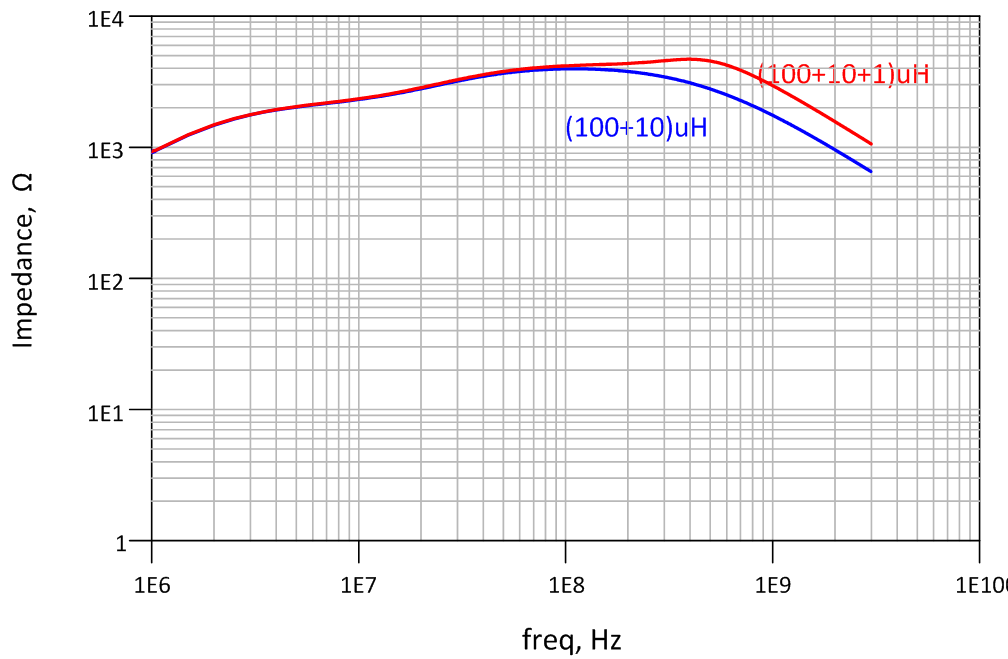SNLA224B June 2014 – October 2025 DS90UB913A-Q1 , DS90UB954-Q1 , DS90UB960-Q1 , DS90UB9702-Q1
- 1
- Abstract
- Trademarks
- 1Introduction
- 2Theory of Operation for Power Over Coax
- 3Design Considerations
- 4FPD-Link PoC Requirements
- 5PoC Noise
-
6TI Reviewed PoC Networks
- 6.1 PoC Network from FPD-Link III Data Sheet
- 6.2 Murata FPD3 Networks
- 6.3 TDK FPD3 Networks
- 6.4 Coilcraft FPD3 Networks
- 6.5
Murata FPD4 Networks
- 6.5.1 Design 1
- 6.5.2 Design 2
- 6.5.3 Design 3
- 6.5.4 Design 4
- 6.5.5 Design 5
- 6.5.6 Design 6
- 6.5.7 Design 7
- 6.5.8 Design 8
- 6.5.9 Design 9
- 6.5.10 Design 10
- 6.5.11 Design 11
- 6.5.12 Design 12
- 6.5.13 Design 13
- 6.5.14 Design 14
- 6.5.15 Design 15
- 6.5.16 Design 16
- 6.5.17 Design 17
- 6.5.18 Design 18
- 6.5.19 Design 19
- 6.5.20 Design 20
- 6.5.21 Design 21
- 6.5.22 Design 22
- 6.5.23 Design 23
- 6.5.24 Design 24
- 6.5.25 Design 25
- 6.5.26 Design 26
- 6.5.27 Design 27
- 6.5.28 Design 28
- 6.5.29 Design 29
- 6.6
TDK FPD4 Networks
- 6.6.1 Design 1
- 6.6.2 Design 2
- 6.6.3 Design 3
- 6.6.4 Design 4
- 6.6.5 Design 5
- 6.6.6 Design 6
- 6.6.7 Design 7
- 6.6.8 Design 8
- 6.6.9 Design 9
- 6.6.10 Design 10
- 6.6.11 Design 11
- 6.6.12 Design 12
- 6.6.13 Design 13
- 6.6.14 Design 14
- 6.6.15 Design 15
- 6.6.16 Design 16
- 6.6.17 Design 17
- 6.6.18 Design 18
- 6.6.19 Design 19
- 6.6.20 Design 20
- 6.6.21 Design 21
- 6.6.22 Design 22
- 6.6.23 Design 23
- 6.7 Coilcraft FPD4 Networks
- 7Summary
- 8References
- 9Revision History
2.1 Inductor Characteristics
An ideal inductor is capable of blocking all AC frequencies and passing all DC power. However, inductors have characteristics that make them behave less like an inductor in extreme circumstances. Real-world inductors behave more closely to the circuit shown in Figure 2-2 with parasitic capacitance and resistance components. At low frequencies, the capacitor acts like an open circuit with high impedance, and the inductor acts like a short circuit with low impedance. At very high frequencies, the capacitor acts like a short circuit, at which point the impedance is equal to RL.
 Figure 2-2 Real World Inductor
Figure 2-2 Real World InductorThe impedance peaks at the self-resonant frequency (SRF) where the inductor and capacitor resonate. At frequencies past the SRF, the parasitic capacitance takes over and lowers the impedance. The SRF can be calculated using Equation 2, where L is the inductance, C is the parasitic capacitance, and F is the resonant frequency. These values are typically listed on the component’s data sheet.
The impedance of a 100uH inductor is shown in Figure 2-3 where the black line shows the impedance of an ideal inductor before the SRF and the red line shows the impedance of the parasitic capacitance after the SRF.
 Figure 2-3 SRF Impedance Plot
Figure 2-3 SRF Impedance PlotFigure 2-3 shows that for a 100μH inductor, the impedance rises above 1k? at about 1 MHz and drops below 1k? above frequencies of about 30MHz. Although not strictly required, an impedance above 1k? is recommended as high impedance correlates to lower signal loss. For this reason, a more complex low pass filter is required to raise the impedance over the entire FPD-Link bidirectional signaling frequency range.
To increase the impedance of the circuit over the entire operational frequency range, additional inductive components of different values can be added in series. Compared to the 100μH inductor the 4.7μH inductor has a higher SRF but still does not achieve a high impedance across a large frequency range. However, when used in series, the impedance remains above 1k? from about 1MHz to well over 500MHz.
 Figure 2-4 Impedance of Series Inductors
Figure 2-4 Impedance of Series InductorsBy cascading inductors in series, the user can build a wide-bandwidth inductor that can cover the frequency range of the back channel all the way to the frequency of the forward channel. This is demonstrated further in Figure 2-5 and Figure 2-6. Figure 2-5 shows impedance graphed for individual inductors of various values. The individual inductors do not provide an impedance of 1k? over a wide frequency range. However, Figure 2-6 shows that when combined, the inductors provide consistent impedance of 1k? over a large frequency range.
 Figure 2-5 Impedance of Individual Inductors
Figure 2-5 Impedance of Individual Inductors Figure 2-6 Impedance of Combined Inductors
Figure 2-6 Impedance of Combined InductorsAn additional consideration when working with real-world inductors is the saturation current. Inductors store electrical energy in the form of a magnetic field. The strength of the magnetic field is correlated to the current flowing through the inductor. The saturation current is the maximum current that can be supported before the inductor ceases to behave like an ideal inductor. When implementing a PoC network, it is crucial to verify that the operating conditions do not exceed the max rated electrical characteristics of any component.